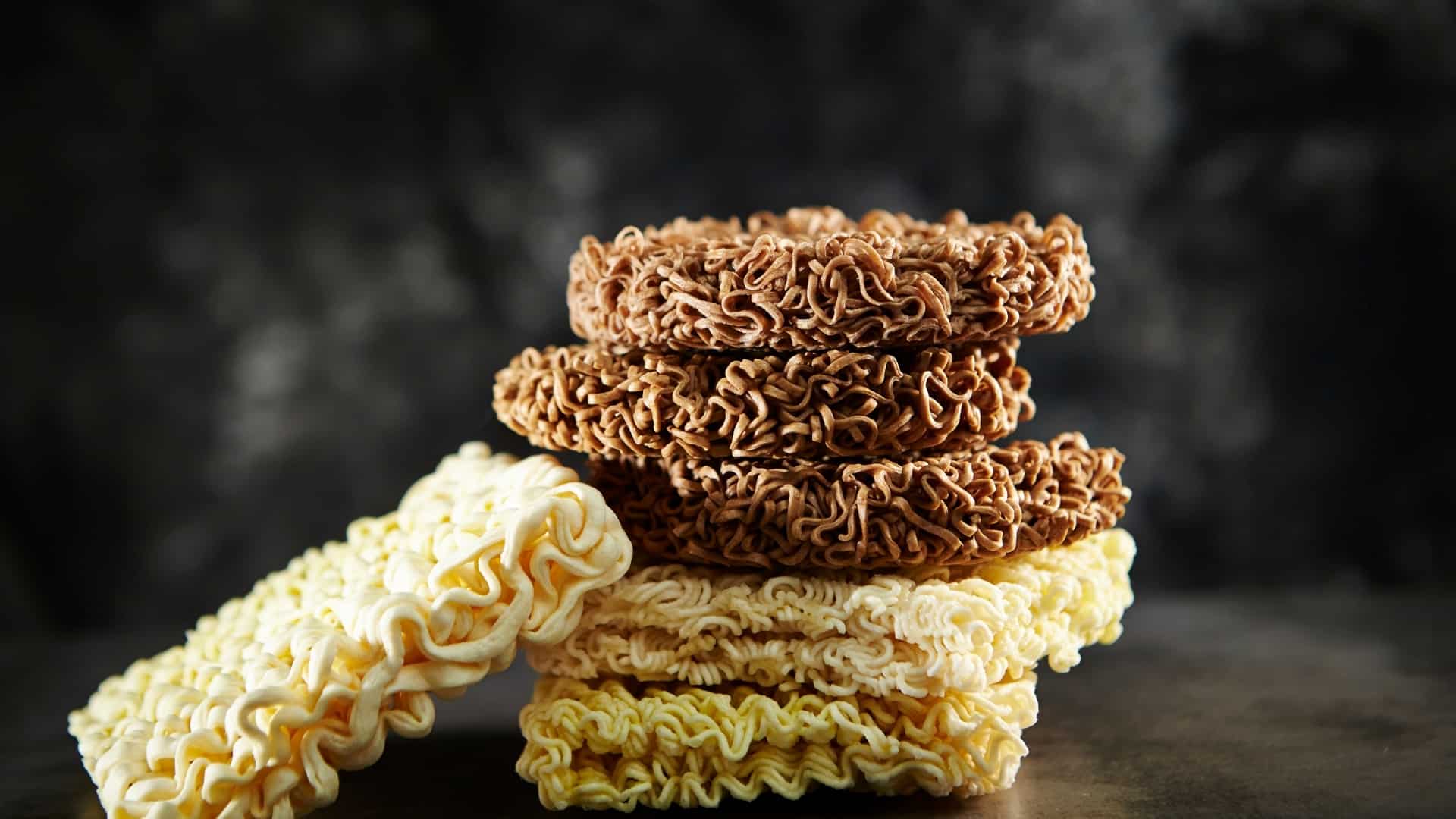Are Ramen Noodles Chinese or Japanese?
Ramen has come a long way through history, starting as a simple, inexpensive dish for working-class people to now, where it is exploding as a culinary phenomenon throughout the world.
However, there can be a lot of confusion about where exactly ramen comes from. Is it mostly part of Chinese culture or Japanese culture?
That’s the question we seek to answer today, and it’s more complex than you might think.


Check out our new cookbook
Bitemybun's family recipes with complete meal planner and recipe guide.
Try it out for free with Kindle Unlimited:
Read for freeIn this post we'll cover:
The Origin of Ramen
Though we tend to think of ramen as a Japanese dish, the basis for these noodles actually came from the Chinese la mian, or “hand-pulled,” noodles. In fact, some linguists believe that the word “ramen” itself is an adaptation of la mian, as in Japanese, the L and R sounds are the same.
That doesn’t mean the two noodle types are the same, though. Quite the contrary, ramen has evolved greatly from its Chinese origins and has now become a distinctly Japanese dish, requiring different techniques and ingredients to make.
As its name implies, la mian noodles are created by using one’s hands to pull wheat flour dough into long strings. They tend to have a much softer texture than ramen noodles because of the oil that’s used when pulling them by hand.
Ramen noodles are not made with this method. Instead, the dough is cut into long, noodle-like strands And the ingredients are somewhat different, too. While both are made of wheat flour, salt, and water, ramen noodles also have an extra ingredient called kansui. Kansui is an alkaline agent that gives ramen its distinctive flavor, color, and texture.
Also read: this is the difference between Japanese and Korean ramen
How the Noodles Made Their Way to Japan
While it’s not completely clear how or when exactly la mian noodles transferred to Japan and became ramen, most scholars agree that ramen became a popular food in Japan after the restaurant Rai Rai Ken opened in Tokyo in 1910. At the time, the cooks there referred to the noodles as “shina soba,” or Chinese soba. They put a Chinese twist on the already-popular Japanese soba noodles.
The popularity and prevalence of these noodles were helped by their inexpensive nature and ease of creation. They quickly became the food of choice for many working-class Japanese citizens.
Then, after World War II, ramen’s popularity grew even more thanks to the invention of instant ramen. Initially created by Momofuku Ando to help feed the survivors of Hiroshima and Nagasaki, his Nissin Chikin Ramen can now be found in practically any grocery store. From that original creation, instant ramen has flourished, adopting many new, interesting, and occasionally, downright strange flavors.
In 1971, he introduced cup noodles, even more portable and easy to make than regular instant ramen. These also quickly took off and began to rise in popularity.
Also read: are shrimp in cup noodles real? The surprising truth
Why There Can Be Confusion About the Origin of Ramen
It’s understandable that ramen’s origin can be a little confusing. There are conflicting accounts of where it came from exactly and how it originated. But ultimately, the noodle made its way from China to Japan, where it gained its worldwide notoriety.
Today, ramen in Japan and the world over is beginning to experience a shift. What was originally a cheap, inexpensive option for working-class people is beginning to become more of a luxury experience. Restaurants are popping up all over the world, charging premium prices for this culinary delight.
Even instant ramen is beginning to see a bit of a change. The tried and true fried instant noodles that are every college student’s staple will probably never truly go away, but recently there has been a rise in brands offering a little bit more of an authentic ramen experience in your cup of noodles.
They’re selling instant ramen that uses fresher noodles and ingredients than the fried, dried-out varieties that you find in most instant noodle packages.
Whether fresh or prepackaged, though, ramen noodles all share the same history, and they’ll always be around as comfort food.
Final Thoughts on the Origin of Ramen
Though the concept of ramen noodles originated in China, most Chinese people today would not consider ramen to be a Chinese dish. Over the years, it has grown and changed from its la mian origins to become the widely recognizable, worldwide phenomenon that it is today.
So to answer the original question of whether ramen is Chinese or Japanese, though it has its origins in China, these days it is a distinctly Japanese dish and there are very few people who would argue against that.
We hope this little look into the history of ramen and its origins has been helpful and informative for you. After all, no matter what kind of ramen you enjoy or where it comes from, we can all agree that it is delicious.
Also read: are ramen noodles fried? And is that bad?
Check out our new cookbook
Bitemybun's family recipes with complete meal planner and recipe guide.
Try it out for free with Kindle Unlimited:
Read for freeJoost Nusselder, the founder of Bite My Bun is a content marketer, dad and loves trying out new food with Japanese food at the heart of his passion, and together with his team he's been creating in-depth blog articles since 2016 to help loyal readers with recipes and cooking tips.
